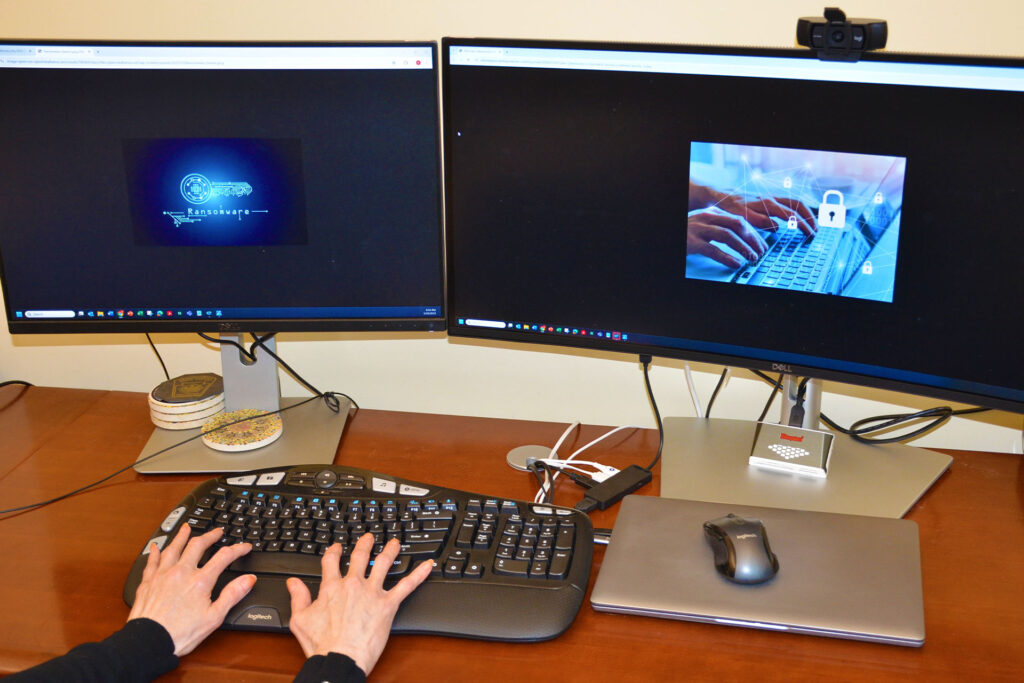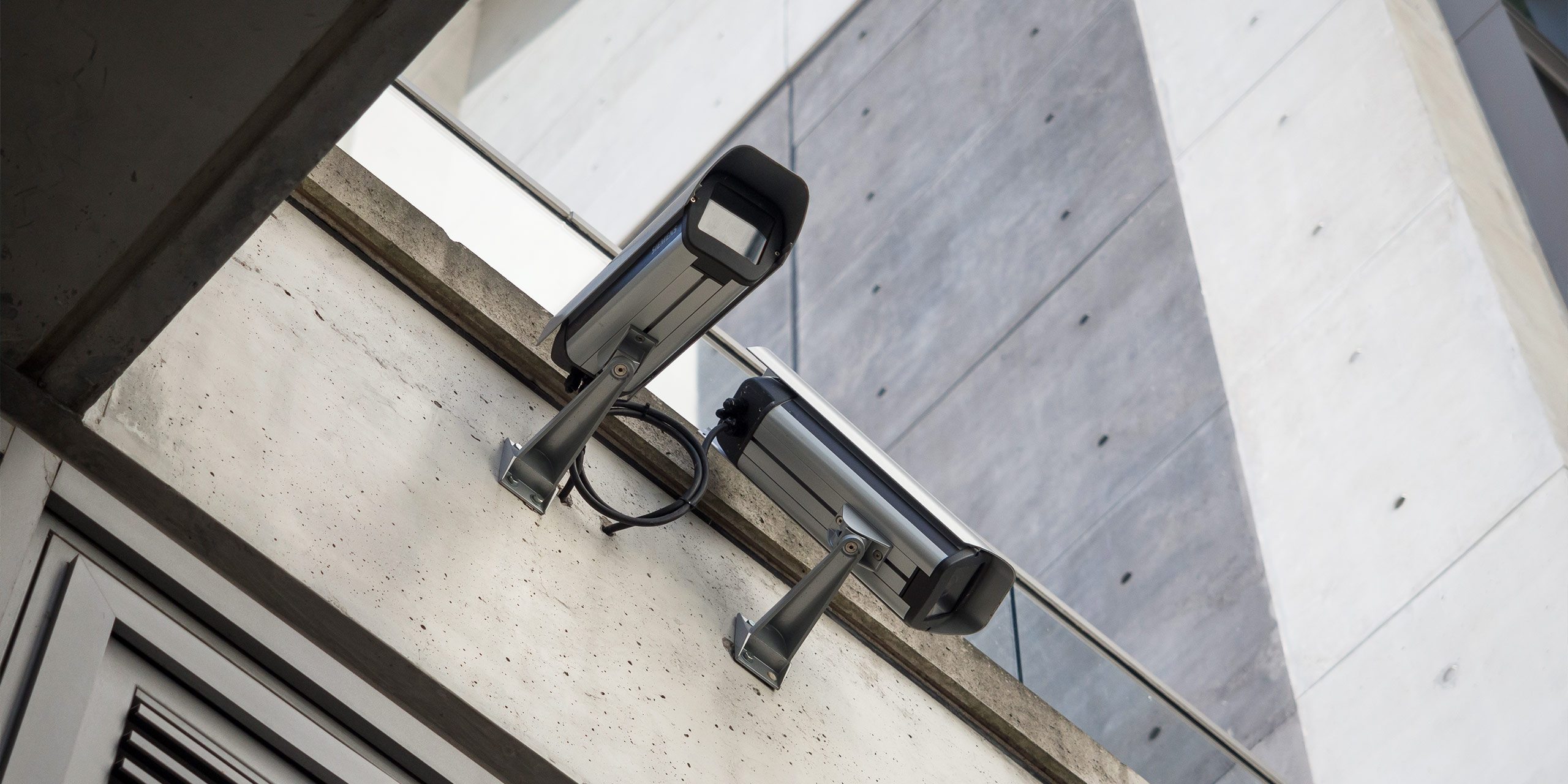Introduction
Threats and acts of violence in United States federal and state courts have risen exponentially within the last decade, according to information published by the National Judicial College in 2024.1 It is important to note that, while federal judicial officials enjoy the protective services of the U.S. Marshals Service, these provisions do not normally exist for judges and legal professionals in state courts. This heightens the need for enhanced situational awareness and risk avoidance in the judicial community and a robust commitment to safety and security within state courts. While data collected and reported to respective authorities typically focuses upon judicial officers and judges, threats are not limited to these persons alone. Legal professionals, including judicial administrators, court managers, clerks, and associated staff within those offices, are sometimes subject to the volatile, hostile, and even threatening tirades of disgruntled court users involved in contentious cases from the initial filing to final conclusion. However, while recognition of the concerning nature of the potential issues inherent in the work of the courts may cause alarm, with reasonable precautions and a commonsense approach to security, these legal professionals can ensure their safety while conducting their daily activities in service to the public.
For judicial officials and legal professionals wishing to enhance their personal safety and increase the resiliency of their security posture, this article provides an overview of the risks inherent to judicial service. More importantly, it offers practical guidance for effectively mitigating many of the risks commonly encountered while personnel are (1) in service in the courthouse, (2) while in their private residence, (3) traveling to and from work, (4) being out and about in the community, and (5) while using the Internet. While it is attacks on judges that often grab sensational headlines and views on social media platforms and YouTube, we should never lose sight of the inherent risk associated with employment in the judicial branch.
Understanding the Risks
Risk is an inherent consideration in any profession. What varies, however, is the nature of that risk and its frequency. For legal professionals, the probability of interacting with hostile, volatile, and even violent individuals is an unfortunate reality. While it is generally assumed that not all litigants in legal matters will gracefully accept a judge’s final decision, it is particularly important to understand that the stress of litigation at all stages of the proceedings may sometimes exceed the coping capacity of people with psychological or behavioral dysregulation. Situations where someone may feel that an irreconcilable injustice or fundamental unfairness exists are a common precursor for those who choose threats and/or violence over peaceful resolution. This feeling may be present in a party to a legal matter before the first pleading is filed, and, due to long-simmering tensions, they may react strongly to the most routine of initial filings. Particularly in cases where there is a heightened sense of personal investment, emotions run high. Cases involving divorce, child custody, landlord/tenant disputes, estate settlement disputes, and employment termination frequently trigger strong emotional responses. The U.S. Secret Service has identified a clearly defined “pathway to violence” that transitions from “grievance and ideation” to “planning and attack.”2 Once someone has set upon this course, the shift between stages can happen with surprising speed. Awareness of and preparation for emotional volatility in court users is key to protecting judges and courthouse personnel.
While emotional and behavioral volatility is not necessarily uncommon within judicial settings, calculated acts of predatory violence by persons having malevolent intentions may also be realized in locations beyond the confines of a courthouse where those who would be targeted are most vulnerable. Accordingly, it is essential for judicial professionals to thoughtfully consider the adequacy of their security postures within their respective theaters of vulnerability, including (1) while at court, (2) while at home, (3) while traveling to and from work, (4) while in the community, and (5) while on the Internet.
Although risks posed by volatile litigants are of most notable concern, judicial professionals should not discount risks posed by those with connections to associates of litigants or defendants, radicalized violent extremists, or even those having no personal or ideological animus. There is also the very unfortunate potential for harm to occur as a consequence of simply being at the wrong place at the wrong time. It is important to remember that the degree of risk experienced by a judicial professional is often proportionate to the intent and capability of a potential assailant, coupled with a would-be victim’s overarching vulnerability. For example, a shouted personal insult or email tirade may be unpleasant but not necessarily a true threat. However, a reference to the type of car a judge or legal professional drives to and from the courthouse at a specific time, even though delivered in a calm and quiet tone of voice, is clearly a menacing tacit threat and one to be taken extremely seriously.
Unfortunately, personal safety and security are seldom convenient, as they require continuous situational awareness and a resolute commitment to situational avoidance. Although it eventually becomes second nature to lock the doors when entering a vehicle and when returning home, to be aware of who is around you in public places, and to vary routes to and from work, it does require constant and consistent effort to develop such habits. It is these small adjustments that help to ensure personal security outside of the guarded courthouse environment. In the end, it’s simply about choosing to be a hard target for those who might seek to cause harm and, in choosing accordingly, not to be a victim of those who may wish to harm members of the judicial system. In the words of Bruce Schneier, noted security technologist and author, “Security is always a trade-off between convenience and safety.”
Identifying and Mitigating the Risks
While some risks associated with threats and violence toward judicial officials and legal professionals may be avoidable, there are those that are not. For risks that cannot be avoided, risk mitigation must be considered. Risk mitigation involves the selective incorporation of risk-reducing and security-enhancing strategies, practices, and technologies necessary to elevate the security posture of a judicial professional at risk. Risk mitigating solutions may be categorized as “psychological strategies,” “technological systems,” or “behavioral practices” for purposes of clarity and discussion. The essence of risk mitigation is best realized when both vulnerabilities are reduced and security is enhanced by solutions that enable an at-risk person to deter, detect, delay, and to defend against harm. In its simplest form, risk mitigation provides “security in depth” or “concentric layers of protection” that are designed to “deter” acts of violence, “detect” would-be attackers who are not effectively deterred, “delay” an assailant’s endeavors, and to vigorously “defend” against death or serious bodily injury.
For judicial officials and legal professionals wishing to improve their personal safety and security postures, risk-mitigating measures should be considered that are reasonable, feasible, provide multiple levels of redundancy, and are commensurate with both foreseeable threats and individual risk tolerances. This would include adopting an enhanced appreciation for situational awareness and avoidance, implementing a series of intentional risk-reducing activities, and incrementally improving capabilities related to physical security. A comprehensive approach that considers all aspects of life is required for effective protection. Identifying vulnerabilities and implementing security-enhancing solutions while at court, at home, traveling, in the community, and on the Internet provides for a thorough solution to the issue of personal safety management. As has been stressed throughout this article, safety and security for judicial officials and legal professionals extend far beyond the courthouse itself.
The key to a balanced personal safety mindset is preparedness while never falling prey to the influences of paranoia. Having a plan for issues that are likely to develop, as well as those that are considered unthinkable yet foreseeable, provides a sense of control rather than fear and helplessness in the face of the unknown. The ability to perform the daily tasks of life while knowing one is prepared for difficult or even dangerous situations increases the quality of life. Most of all, however, a mindset of awareness and avoidance is about ensuring the actual safety and security of staff, visitors, and especially family members who all too often may also find themselves in harm’s way.
The What and Where of Risk and How to Address It
Risks to judicial officials and legal professionals are inherent in and an unfortunate byproduct of the work that they do on a daily basis. With happy exceptions such as a wedding or an adoption, a visit to the courthouse generally involves a difficult interpersonal or business issue. Following what they may subjectively perceive as an unsatisfactory or unproductive interaction with a legal professional, an escalation of frustration may lead a court user to a chain of events that can follow an unwary person to their vehicle, their home, community, and into cyberspace, and thus into their personal space and peace of mind. In each area of concern or “theater of vulnerability,” a judicial official or legal professional can take reasonable precautions that will enable them to continue performing their duties with a high degree of efficiency and without undue levels of anxiety while providing a level of confidence in their security.
Below is a discussion of the conditions under which threats are likely to occur to courthouse employees, coupled with associated suggestions for enhanced personal safety and security. It is important to remember that involvement in an unpleasant event or receipt of a threat does not create the certainty of danger. Indeed, the vast majority of threats are not actually credible or acted upon. In order for a threat to be credible, the actor must have the capacity to carry it out, the means with which to do so, and access to the person whom they wish to harm. As it is wise for all citizens to take common-sense precautions to ensure personal safety, the courthouse employee who cultivates a safety and security-oriented acumen can prevent unnecessary adverse events. However, it should be noted that the courthouse is not necessarily the place in which the judicial official or allied legal professional may be the most vulnerable.
Controlling the courthouse environment is probably the simplest of the venues in which an employee will travel. In addition to the actual security, a courthouse carries an aura of authority that is impressed upon all but the most defiant of individuals. Other areas in which judicial officials and legal professionals spend their time are far less formally structured and defensible. It is important to remember that people motivated to do harm are most likely to seek a time and place when they may carry out their objective with success. Should that objective be harmful to a specific judicial official or allied legal professional, rather than simply creating a spectacle in a public building, the danger to an individual courthouse employee who has been targeted by a disgruntled court user may be greater outside of the courthouse itself.
The goal is always to reduce the opportunity for a courthouse employee to inadvertently open themselves while decreasing risk vulnerability by using situational awareness and avoidance techniques. Best practices for personal safety and security can be divided into three distinct approaches – “psychological strategies,” “technological measures,” and “behavioral practices.” These will be discussed in detail below as related to the specific situations in which a judicial official or allied legal professional under threat may find themselves.

Risks While at the Courthouse
It is most likely while working at the courthouse that a judicial official or legal professional will come to the attention of a member of the public who may pose an eventual threat. Whether frustrated by the inability of a staff member in the filing office to give legal advice or to provide assistance with the wording of a pleading, it is possible that a court user could view a refusal to assist as a personal affront, professional indignity, or even an irreconcilable injustice. Legal professionals may also encounter people in the hallways or other public areas, such as bathrooms or cafeterias, who attempt to solicit information regarding legal issues or complain about interactions with other members of the courthouse staff. Even if they are not directly approached, an employee may witness an event unfold that results in them coming to the attention of someone who may wish to cause them harm in retribution for a perceived slight.
Risk Mitigating Solutions at the Courthouse and Why they Work
Psychological Strategies:
- While judicial officials and legal professionals may not be in direct control of security at courthouse entrances, it is important that they remain vigilant and cooperative with security staff. Should you notice something out of the ordinary, bringing it to the attention of appropriate security staff could help them to avert or diffuse a troubling situation.
- Ensuring that signage within the courthouse is clear will help to reduce frustration in members of the public when looking for the proper office or department. Courthouses are often a maze of hallways, and it is not helpful to an already irritated person to have them needlessly lost.
- Becoming familiar with the security staff will increase the sense of comfort and protection. Remember that they are valued co-workers who are looking out for your well-being every day. In the event of an emergency, being recognized as a judicial official or legal professional by the security staff will help them to help you.
Technological Measures (security technologies):
- CCTV systems and panic/duress alarms installed in offices, particularly in those where members of the public file documents, will summon assistance in a crisis. The faster that help can respond, the faster that an adverse event can be concluded.
- Emergency blue light parking lot call stations with connection to courthouse security will both bring assistance and alert bystanders to an event occurring. While waiting for help to arrive, you will be bringing attention to the need for help and deterring an assailant from continuing their actions.
- Kevlar ballistic-resistant lined transaction counters in filing offices increase protection for clerks who primarily have a public-facing function. File clerks are often the target of disgruntled litigants and, should the worst happen, having a safe barrier between an armed assailant and the clerk could be lifesaving.
Behavioral Practices:
- Non-escalation and de-escalation training programs for judicial officials, legal professionals, and office staff are essential. When confronted with a potentially violent or volatile encounter, knowing what not to say is as important as knowing what to say. The ability to successfully manage volatile encounters before law enforcement arrives may be pivotal to personal safety and avoiding adverse outcomes.
- Emergency action planning for active attacker events will increase confidence and comfort during the workday as well as safety should there be an actual event. Know where to run, how to hide, and what to do to protect yourself in an unavoidable life-threatening encounter is essential. There is simply no substitute for having a well-thought-out plan and knowing that you can react quickly should the need arise.
- Embrace a confident mind-set regarding personal safety. It is unfortunately common to hear that a person was aware that a situation was rapidly escalating, but they were reluctant to summon assistance out of embarrassment or an unwillingness to call attention to themselves. Remember that a momentary discomfort is worth averting a serious issue for yourself and your co-workers.

Risks While in Transit
The majority of judicial officials and legal professionals travel to and from work in private vehicles. It is helpful when secure parking is provided, but it is not always possible for every employee to have this advantage. Other employees, particularly in larger cities where parking is at a premium and many do not own private vehicles, will be taking public transportation. Due care should be used to provide secure entrance and egress to the courthouse. Given that courthouse employees generally keep regular working hours, it is reasonable to predict when they will be arriving at and leaving from the courthouse. A member of the public would find it relatively easy to identify the mode of transportation and time of arrival and departure used by a courthouse employee who has piqued their ire.
Risk Mitigating Solutions While in Transit and Why they Work
Psychological Strategies:
- Exude a demeanor of confidence while in transit; always remain calm, collected, and very situationally aware. Making yourself a challenging choice for a target will make you less likely to become a victim.
- Do not allow distractions from cell phones, children, and pets while driving. A distracted person is easy to spot and is one of the markers of an “easy” target.
- Ensure that you are comfortable with the condition of your vehicle, confident of its roadworthiness, and have an emergency kit suitable for your individual travel needs. Knowing that you can get where you are going, can summon help in the event of an emergency, and have the necessary resources to safely wait for that help to arrive provides peace during travel.
- Knowing where you are going and exactly how to get there before departing will provide a sense of safety and security. Doubt and nervousness while driving promote distraction and a sense of anxiety that is unnecessary stress.
Technological Measures:
- Mobile phone emergency applications that connect to alarm monitoring centers and provide live communications and video feeds have become common. Using them will connect you to assistance in the event of an emergency.
- Personal GPS features on mobile phones, smart watches, or tracker tags provide the ability for family to find you if you fail to reach your destination promptly. Many are also outfitted with alarms to alert family or friends of trouble. Should there be a problem, finding you is obviously a priority.
- Dash cameras can be invaluable in the event of an incident. Having actual footage of an event occurring on the road may provide identifying information such as license plates, make and model of car, and potentially an image of the driver as well as create a permanent record rather than requiring you to rely on memory.
- While GPS directions are undoubtedly a security enhancement and ensure that the traveler arrives at the destination in the most direct manner, it is a mistake to rely exclusively on technology that can fail. Have a map in your car and know how to use it in the event of an emergency. Getting lost makes you vulnerable.
Behavioral Practices:
- Always have a trusted person who is aware of your expected time of arrival. This is especially important when you are deviating from your expected routine and are traveling out of your normal location. If no one knows that you are missing, then you will not have anyone looking for you.
- Alter travel routes frequently to avoid developing predictable routines. If you have access to a second vehicle, switching between them occasionally is also recommended. If you have caught the attention of a disturbed person due to a courthouse incident and they are aware that you drive a red sedan, occasionally driving a blue SUV will conceal your arrival and departure.
- Remain alert and project a demeanor of confidence when using public transportation or walking in public. Situational awareness, knowing who is near you and what is happening around you, is crucial to safety.

Risks While at Home
Should a legal professional come to the attention of a member of the public who is sufficiently motivated to discover their home address, this is clearly an escalation of the level of threat and something to be taken extremely seriously. Risks to judicial officials and legal professionals while at home are uniquely problematic since most homes are neither designed for security resiliency nor well-appointed with security technologies. This situation is further complicated by the fact that the home is where the average person spends the vast majority of their time outside of work. Legal professionals would do well to embrace all personal safety measures to harden their homes for the welfare of themselves and their loved ones.
Risk Mitigating Solutions While at Home and Why they Work
Psychological Strategies:
- Those having disingenuous or malevolent intentions are often deterred by the presence of dogs, especially large dogs. Consider placing a large dog bowl, leash, or a German Shepherd, Rottweiler, or Doberman-oriented door mat outside of the residence.
- Lawn signage and window decals indicating the presence of residential alarms or CCTV systems can also be a powerful deterrent to those contemplating an intrusion into a private residence. The signage and decals, of course, do not provide actual detection but merely imply that it is present.
- The architectural concept of crime prevention through environmental design (CPTED) has been shown to deter crime and violence when properly employed. Keeping ornamental vegetation well-pruned and unavailable as a hiding place while incorporating thorny plants and bushes beneath windows can dissuade all but the most determined of would-be prowlers or burglars.
Technological Measures:
- Commercially installed or DIY residential alarms, CCTV systems, and motion-sensor-activated outdoor lighting systems are essential to a well-secured home. In the event of an emergency, these technologies will alert you to danger quickly so that law enforcement may be summoned for assistance.
- Install commercial or security-grade locks on all doors and windows. Ensure that all family members respect the need to use them at all times – even during the day and when everyone is at home. Having doors locked at night is only using them to their partial capacity.
- Consider intrusion-proof films for selected ground-level windows to thwart home invasion and burglaries. Securing windows against shattering prevents an otherwise easy method of entrance into a home.
Behavioral Practices:
- “Don’t Answer/Don’t Open” the door to strangers or accept receipt of unexpected parcels from unknown senders. It is not necessary to answer the door simply because someone rings the bell. If you are not expecting a visitor or do not recognize the person, do not open the door.
- Remove any Personally Identifying Information (PII) from residential trash that might divulge confidential information like shopping receipts, financial information, medical or Rx histories. Routinely using a home shredder or simply using a black marker on key information will prevent a rummager from obtaining critical information.
- Encourage “See Something, Say Something, Do Something” situational awareness within the neighborhood. Getting to know your neighbors and having a cordial relationship in which you would become aware of something out of the ordinary at each other’s homes is an invaluable prevention tool.

Risks While in the Community
In addition to a residence, should a would-be assailant take a targeted interest in a courthouse employee, they may also choose to familiarize themselves with their personal habits. For example, where the staff member does their grocery shopping, watches their child’s sporting events, or what restaurants they frequent would easily be noted by someone who has chosen to watch their movements or engage in hostile surveillance. While the adage that there is “safety in numbers” when among a crowd may indeed be true, it is also easy for a potential assailant to blend into that crowd.
Risk Mitigating Solutions While in the Community and Why they Work
Psychological Strategies:
- Demonstrate resolute situational awareness while in the community as it is a powerful deterrent to anyone seeking to leverage the element of surprise in hostile encounters or violent altercations. Remaining vigilant will allow for maximum safety for you and your family.
- All too often, hostile confrontations, volatile encounters, or violent altercations occur without the benefit of witnesses or onlookers. Places and situations void of an ample public presence, like isolated travel routes, desolate parking lots, or poorly illuminated areas at night, should be avoided. The best protection for this is advance planning.
- “The Power of Hello” and “I Spy a Suspicious Guy” are two highly effective strategies for disrupting and thwarting those who may have malevolent intentions. While expressed as an intentional greeting, the “Hello” spoken in a clear and firm voice demonstrates an awareness of a subject’s presence, whereas the “I Spy a Suspicious Guy” strategy encourages direct and brief eye contact with those who are behaving suspiciously or may be endeavoring not to be noticed. This lets them know that they have been seen and that you are not an easy target.
Technological Measures:
- Easily concealable “body alarms” can provide a degree of deterrence in an emergent situation as activation of the device results in a piercing audible siren readily attracting the attention of any and all persons in the vicinity. This almost always results in an attacker fleeing to avoid apprehension.
- Consider installing “personal safety apps” on Android (Samsung/Google) or iOS (iPhone/iPad) devices that can easily be activated to alert emergency contacts or commercial monitoring centers in the event of an at-risk or emergent situation. These “live” monitoring video calling features not only provide live video of a user’s situation and location but can deter would-be aggressors who realize the situation is being monitored and that authorities are likely dispatched.
- Emergency phrases or code words like “NORA” (Need Officers Right Away) can be lifesaving in situations where more obvious or direct communications are simply not feasible or cannot be performed safely. For emergency phrases or code words to be used successfully, professional colleagues and family members alike must be briefed routinely as to the actions required if or when code talk is used.
Behavioral Practices:
- While contrary to natural curiosity, the ability to avoid chaotic people, tumultuous scenes, disruptive events, and suspicious situations whenever possible is essential to personal safety and security. When a crowd is forming, that is your cue to leave.
- For judicial officials and legal professionals who may be subject to threats of violence or who are at-risk of targeted violence, the ability to maintain a low profile enhances personal safety. While this may be temporarily inconvenient, it is inarguably worth the safety such measures bring during times of crisis.
- Remain alert and trust your instincts if anything or anyone seems suspicious or alarming. In his acclaimed book “The Gift of Fear,” noted author and dignitary security expert Gavin de Becker stated, “randomness and lack of warning are the attributes of human violence we fear most, but you now know that human violence is rarely random and rarely without warning.”

Risks While on the Internet
The risks that can befall an unwary user of the Internet are often difficult to detect until it’s too late and PII has been lost, malicious sharing of PII or ‘doxing’ has occurred, or dangerous threats have been posted on social media platforms. Internet risks may result from breaches to cyber privacy by social engineering, phishing schemes, malicious malware, or even targeted attacks on social media. It is unfortunate that the personal nature of some social media leads individuals to feel that they are indeed cultivating friendships equal to or greater than those they have in real life. While sometimes the person to whom they are “talking” is indeed who they purport to be, it is important to be wary and vigilant for the appearance of “red flags” denoting danger. According to global information security and privacy management expert Dr. Larry Ponemon, “A data security breach is about both privacy and security and security becomes very, very important because you cannot have privacy unless you have good security.”
Risk Mitigating Solutions While on the Internet and Why they Work
Psychological Strategies:
- Remember that the Internet is anonymous by nature. Unless the friend request comes from a person known in real life, accept it with caution and be aware that any information that they share may not be accurate.
- Consider labeling laptops and other personal electronic devices with “ENCRYPTED” and “DEVICE TRACKING ACTIVE” to dissuade theft should your device be left unattended. Devices that appear to be unprotected are far more attractive to thieves.
- Deter and thwart hackers by using multi-factor authentication (MFA) involving complex passwords with PIN-generating key fobs or common access card (CAC) technologies. While these may seem complex on their face, learning to use them is not difficult and adds a superior level of protection.
Technological Measures:
- Consider subscribing to a cyber-privacy-enhancing service that reduces exposure of PII on the Internet. This service will identify and redact your digital footprint – sometimes known as cyber-exhaust – from the purview of cybercriminals.
- Ensure antivirus software is installed on your devices and updated regularly. According to the U.S. Government Cybersecurity & Infrastructure Security Agency (https://www.cisa.gov/), antivirus software blocks many viruses before they can infect your computer. It also protects against malware, protects data, and can protect you from identity theft.
Consider hiding your IP address by using a Virtual Private Network (VPN) to enhance your cyberprivacy while on the Internet. By using a VPN, browsing histories and data will remain private to you.
Behavioral Practices:
- Avoid providing PII and immediately cease communication with a contact that appears overly interested in obtaining your information. Simply because someone asks does not mean that your information should or must be provided.
- Educate all members of your family, including children, about the dangers of revealing PII about themselves or family members. Children can often inadvertently reveal information without understanding what they are saying.
- Avoid Internet cafes, public Wi-Fi, and all unsecured networks where hackers can intercept password, credit card information, and other sensitive personal data that can potentially result in further intrusions.
Recommendations
While the first line of defense in safety and security will always be the immediate actions of the individual at risk, for states and state court systems seeking a strategic path forward to better assure the protection of America’s Third Branch of Government, its courts, judicial officials and legal professionals from risks associated with threats and violence, the following suggestions are proposed:
- Creation and implementation of a national system with uniform criteria for the reporting of threats and violence to judicial officials and legal professionals, similar to that which is used by the government in the federal courts.
- Design and development of a national judicial safety and security training program for judicial officials and legal professionals mirroring that which is found in federal courts.
- Enactment of uniform legislation creating civil protection orders in all states for judicial officials and legal professionals and their immediate families who have experienced threats or violence related to judicial service.
- Creation of a national offender database for persons who have been convicted of proffering threats of violence or committing acts of violence toward judicial officials or legal professionals.
- Enactment of legislation providing for the criminalization of access to personal information for illicit purposes, threats to, or actual harm inflicted on judicial officials and legal professionals in all states and U.S. territories.
- Enactment of legislation for Federal appropriation of annual funding to State courts to combat threats and violence to judicial officials and legal professionals.
- Enactment of legislation for state appropriation of annual reasonable funding for residential alarm systems for at-risk judicial officials and legal professionals in all state courts.
- Commission of an office within every state court system for the purpose of assessing threats to judicial officials and legal professionals.
Conclusions
The risks to judicial officials and legal professionals are irrefutable. Unfortunately, it is not possible to provide conclusive data regarding the number and severity of threats and/or adverse events that they experience due to the disparate nature of reporting and data collection measures employed by individual states. Unless and until the states embrace a model similar to that used by the federal system which permits uniform collection and analysis of threats made to legal professionals, it will be necessary to rely on the limited intelligence provided by highly varied state reporting systems and anecdotal information.
Simply stated and most inarguably, the protection of America’s courts is essential to the fair and equitable administration of justice. In essence, the preservation of the rule of law is dependent on safe access to the courts for all citizens. The individuals who make the courthouse their workplace every day must be protected in order for the administration of justice to continue and for the people to be properly served. While crime and violence in society, and that which is expressed towards judicial officials and legal professionals is a reality, the degree to which associated risks are experienced can be mitigated significantly through the strategic and judicious implementation of safety and security initiatives as proposed. The legal professional who understands the inherent risks associated with their chosen career and is willing to implement the suggestions detailed above contributes immeasurably to their own personal safety and security.
ABOUT THE AUTHOR
Robert F. Granzow III, MS, CPP, is director of the Office of Judicial District Security at the Administrative Office of Pennsylvania Courts. A military veteran, he has a background in law enforcement, corporate global security, and advanced training from FEMA and the DHS/CHDS Executive Leaders Program. He was named one of Security Magazine’s ‘Most Influential People in Security.’
- The National Judicial College, Over half of judges report threats, environment affecting mental health, June 27, 2024.
- See generally, Federal Bureau of Investigation. Making Prevention a Reality: Identifying, Assessing, and Managing the Threat of Targeted Attacks. Washington, DC: U.S. Department of Justice, 2017.


